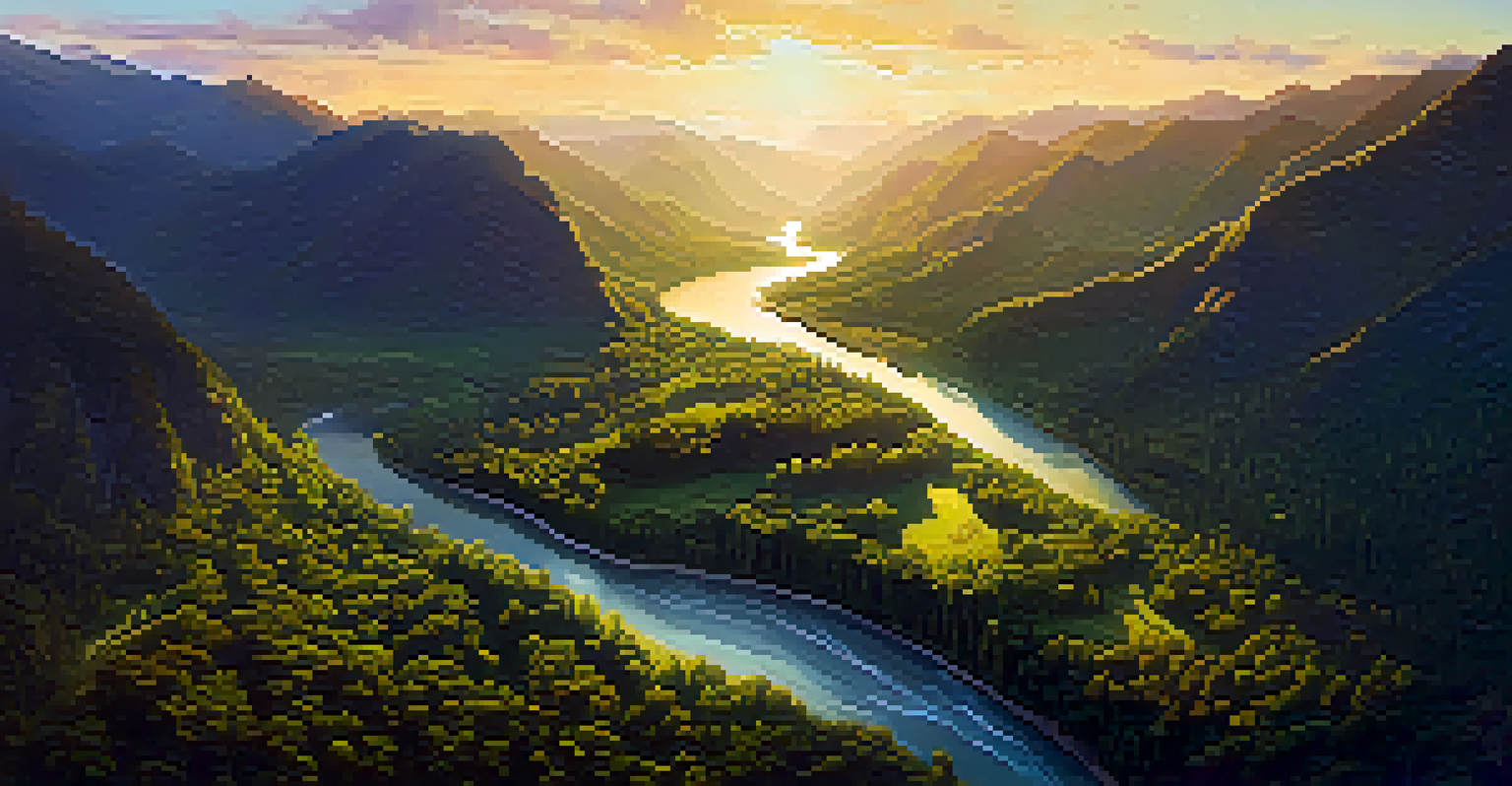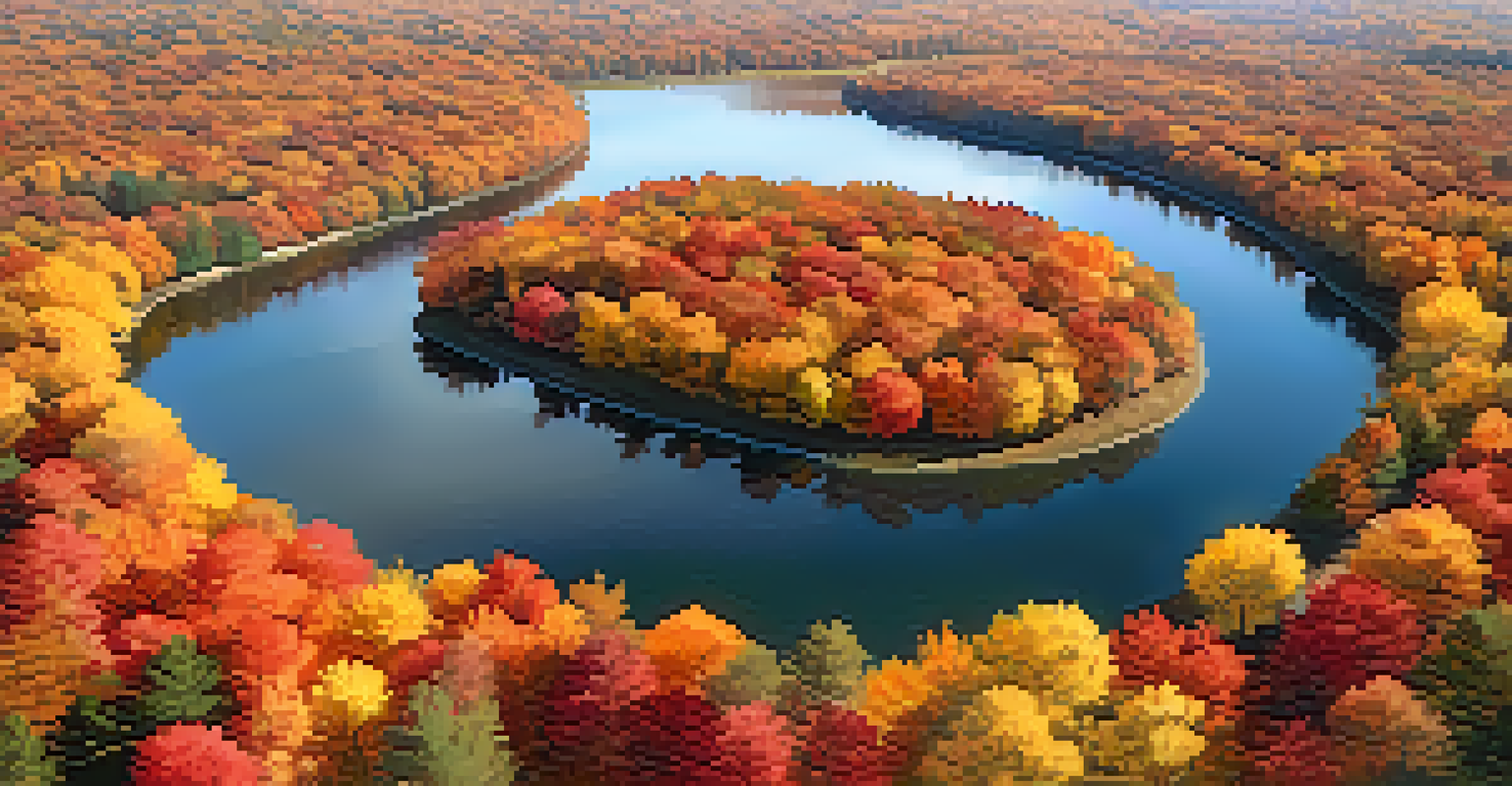Using Drones for Travel Photography: A Guide for Beginners

Why Use Drones for Travel Photography?
Drones have revolutionized the way we capture images, offering unique perspectives that traditional photography simply can't match. Imagine soaring above a breathtaking landscape, capturing sweeping views that tell a story of your adventure. This technology allows photographers to create stunning aerial shots that can elevate any travel experience.
The camera is an instrument that teaches people how to see without a camera.
Not only do drones provide a bird's-eye view, but they also enable you to explore hard-to-reach locations. Whether it’s the rugged cliffs of a coastal town or the vast expanse of a national park, drones can get you there without the physical exhaustion. Plus, they add a sense of excitement to your photography journey, opening up a world of creative possibilities.
However, it's essential to remember that using drones also comes with responsibilities. Understanding local laws and regulations is crucial to ensure you fly safely and respect privacy. With great power comes great responsibility, and being informed is the first step in your drone photography adventure.
Choosing the Right Drone for Beginners
As a beginner, selecting the right drone can feel overwhelming given the plethora of options available. Look for models that are user-friendly, compact, and equipped with decent camera capabilities. Drones like the DJI Mini 2 are popular among novices, offering excellent quality without being too complex to operate.

Consider features such as GPS, altitude hold, and automatic return-to-home functions, which can make flying easier and safer. These elements not only simplify the flying process but also provide peace of mind, allowing you to focus on capturing great shots rather than worrying about losing your drone. Additionally, a reliable battery life is essential for maximizing your shooting time.
Drones Transform Travel Photography
Drones offer unique aerial perspectives and access to hard-to-reach locations, enhancing the travel photography experience.
Lastly, think about your budget. While it’s tempting to go for the latest high-end model, there are plenty of affordable drones that deliver impressive results. Investing in a beginner-friendly option can help you hone your skills before moving on to more advanced equipment.
Essential Drone Photography Tips
To capture stunning photos with your drone, mastering a few techniques can make a significant difference. Start by understanding the importance of light; early mornings and late afternoons provide softer lighting that can enhance your images. Experimenting with different angles and heights can also yield unique perspectives that set your photos apart.
Photography is the story I fail to put into words.
Another key tip is to familiarize yourself with your drone’s camera settings. Adjusting settings like ISO, shutter speed, and white balance can dramatically impact the final image quality. Don't hesitate to practice these adjustments before heading out on a trip to ensure you're comfortable when it’s time to capture those memorable moments.
Lastly, don’t forget to compose your shots thoughtfully. Utilize the rule of thirds, leading lines, and symmetry to create visually appealing images. Just like any form of photography, a well-composed shot can turn an ordinary scene into something truly extraordinary.
Understanding Drone Regulations and Safety
Before you take to the skies, it's essential to understand the regulations governing drone usage in your area. Different countries, and even regions within countries, have specific rules that dictate where and when you can fly a drone. Familiarizing yourself with these regulations not only keeps you compliant but also ensures a safer flying experience.
Always check for no-fly zones, such as near airports, military bases, or crowded events. Many drone manufacturers offer apps that provide real-time information on restricted areas, making it easier for you to plan your flights. Respecting these boundaries is crucial for your safety and the safety of others around you.
Choose the Right Drone for You
Selecting user-friendly drones with essential features ensures a smoother flying experience for beginners.
In addition to regulations, practicing good safety habits is key. Always maintain visual line-of-sight with your drone and avoid flying in adverse weather conditions. Taking these precautions will not only protect your equipment but also enhance your overall flying experience.
Post-Processing Drone Photos
Once you've captured your stunning aerial shots, the next step is post-processing to bring out the best in your images. Using software like Adobe Lightroom or Photoshop can help you enhance colors, adjust contrast, and crop for better composition. Even simple tweaks can take your photos from good to jaw-dropping.
Consider applying filters and presets for a consistent look across your travel album. These tools can help unify your images, making them visually appealing when shared on social media or in a travel blog. Plus, many editing programs offer user-friendly interfaces that are perfect for beginners.
Don't be afraid to experiment with different editing styles; this is your chance to add a personal touch to your photography. The more you practice, the better you’ll become at finding the perfect balance between enhancing your photos and maintaining their natural beauty.
Sharing Your Drone Photography
Once you've edited your photos, it’s time to share your experiences with the world! Social media platforms like Instagram and Facebook are perfect for showcasing your aerial photography. Engaging with fellow photography enthusiasts can foster a sense of community while also giving you valuable feedback and inspiration.
Consider creating a dedicated travel blog or website to display your work. This not only acts as a portfolio but also allows you to share stories and tips related to your travels and photography adventures. Plus, it can be an excellent way to document your growth as a photographer over time.
Importance of Regulations and Safety
Understanding drone regulations and practicing good safety habits are crucial for responsible and enjoyable flying.
Don't forget to utilize hashtags when posting on social media; this can help your work reach a broader audience. Tags like #dronephotography or #travelphotography can connect you with like-minded individuals and potential collaborators.
Continuous Learning and Improvement
Photography, including drone photography, is an ever-evolving field. As technology advances, new techniques and tools emerge, so it's vital to stay updated. Joining online forums, attending workshops, or watching instructional videos can provide fresh insights and keep your skills sharp.
Challenge yourself to try new styles and experiment with different techniques. Whether it’s long exposure shots or capturing dynamic movements, pushing your boundaries can lead to incredible growth and creativity in your photography. Remember, every shot is an opportunity to learn something new.

Lastly, embrace constructive criticism. Sharing your work with others and inviting feedback can help you identify areas for improvement and inspire new ideas. Becoming an exceptional photographer is a journey, and each step you take brings you closer to your goals.